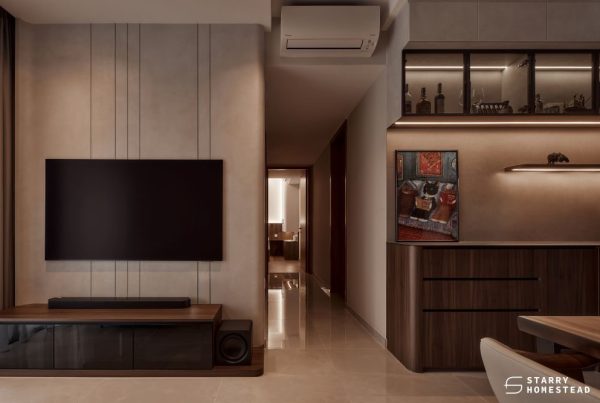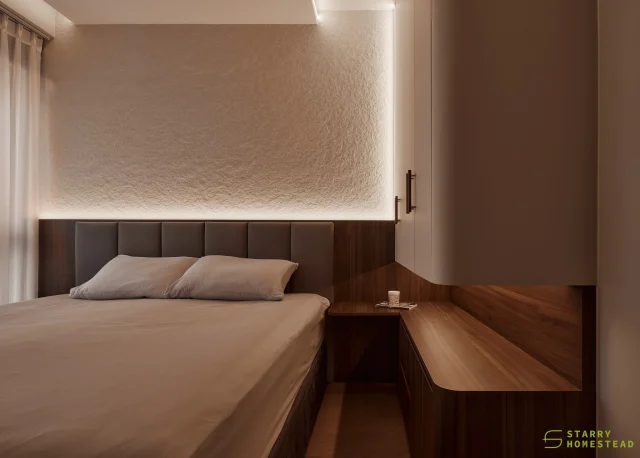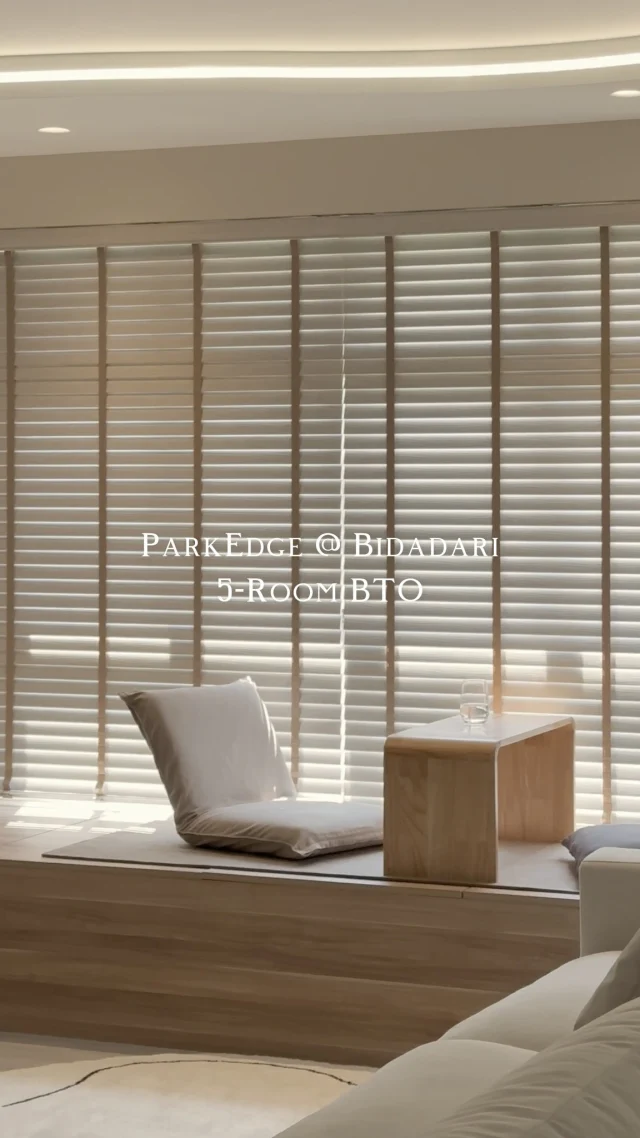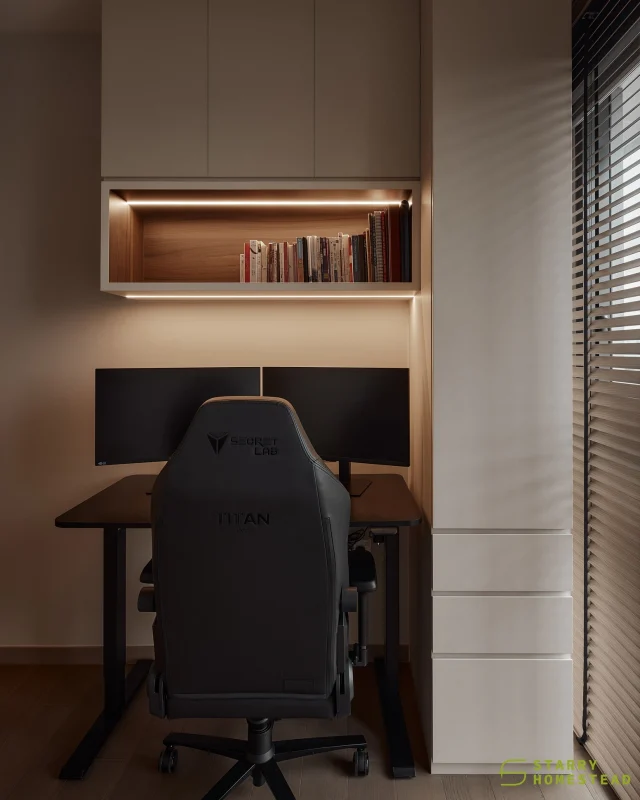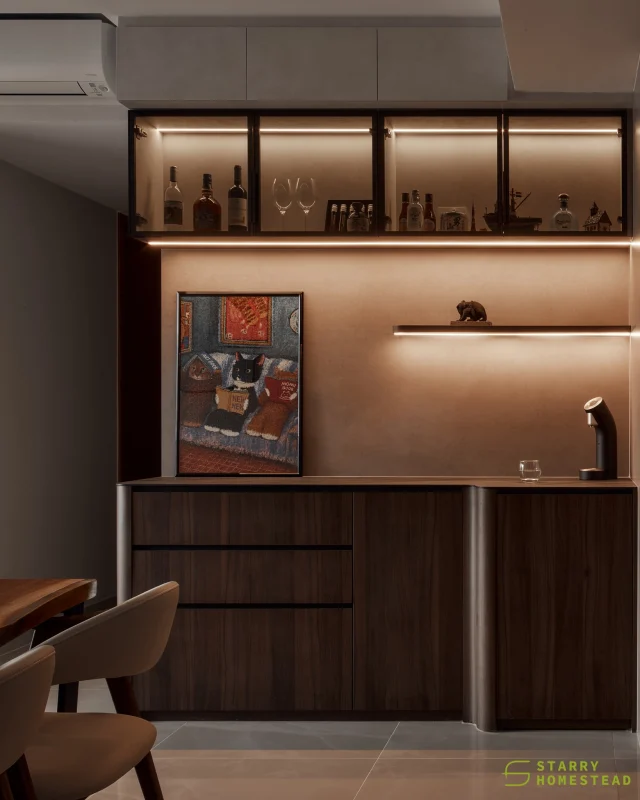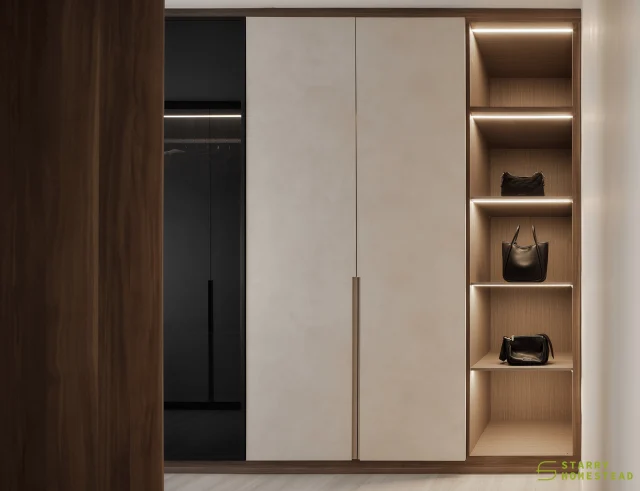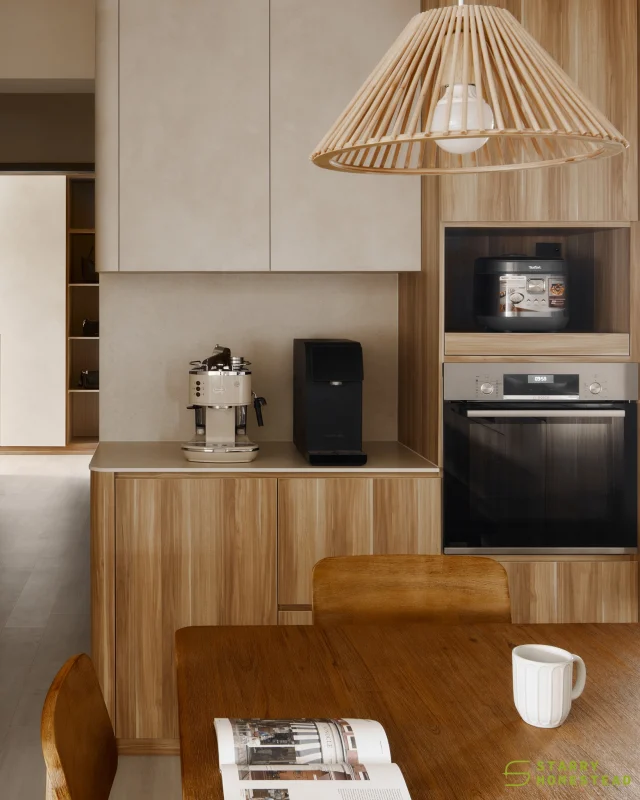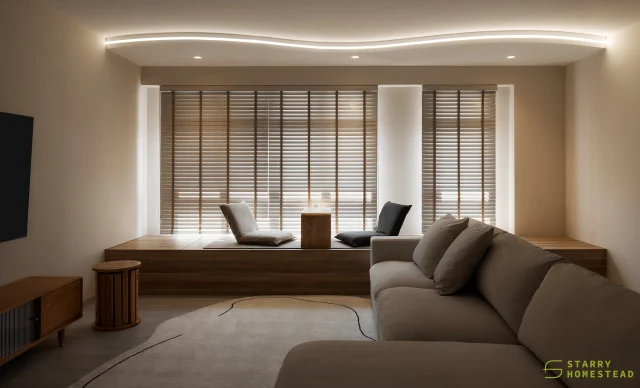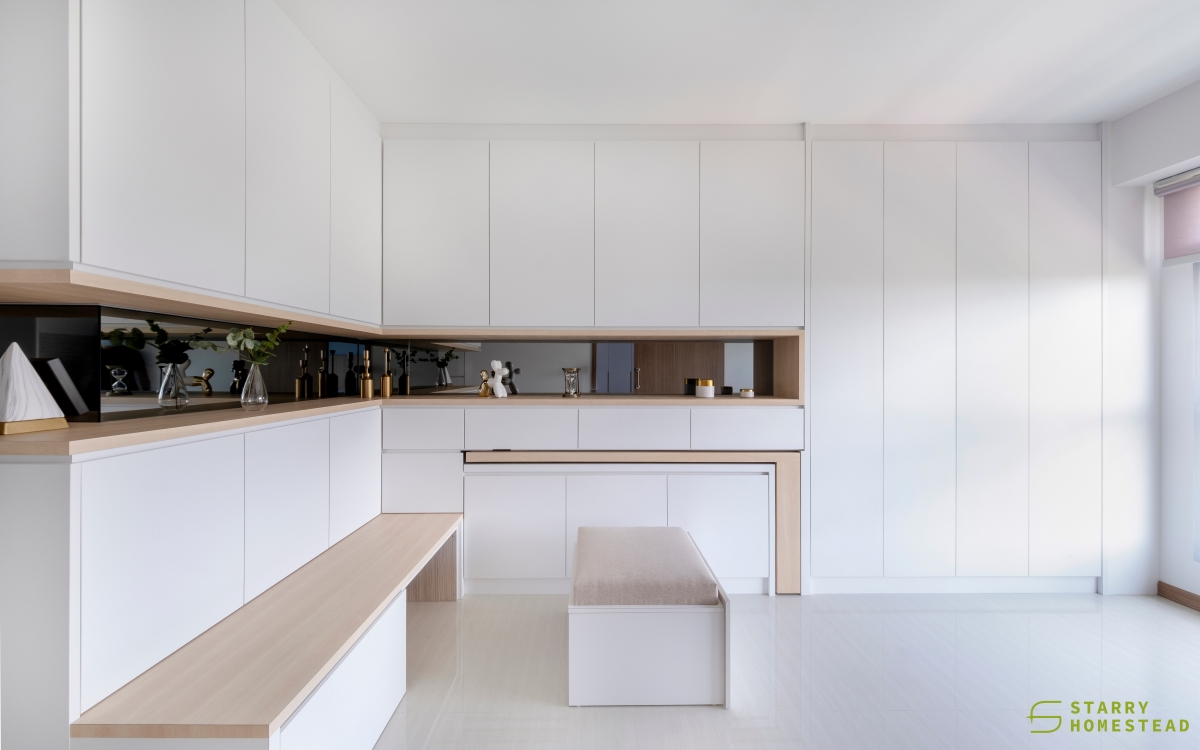 The allure of simplicity and tranquillity in our living spaces has never been stronger, especially now that everything is hectic and fast-paced. This desire for calm has fueled a growing interest in minimalist interior design and its even more pared-down cousin, ultra minimalism.
The allure of simplicity and tranquillity in our living spaces has never been stronger, especially now that everything is hectic and fast-paced. This desire for calm has fueled a growing interest in minimalist interior design and its even more pared-down cousin, ultra minimalism.
But what is ultra minimalism, and how does this type compare to the popular minimalist interior design style?
What is Minimalist Interior Design?
Minimalist interior design, at its essence, is a design philosophy that champions simplicity, clean lines, and a carefully curated selection of objects. Think open floor plans that maximise the flow of natural light, a neutral colour palette that promotes calm, and furniture that serves a clear purpose.
The core principles of minimalist design revolve around these points:
- Stripping Away the Unnecessary: Removing clutter and decorative elements that don’t serve a function.
- Focusing on Essential Items: Prioritising quality furniture and décor that are worth the money, beautiful and practical.
- Appreciating the Beauty of Simplicity: Finding elegance in clean lines, open space, and few ornamentations.
However, the appeal of minimalist design extends beyond aesthetics. Many believe that by creating a calm and uncluttered environment through minimalist design can contribute to improved well-being and a greater sense of mindfulness.
It’s the Hardest Interior Design to Master
Achieving a truly minimalist aesthetic can be more challenging than it appears. It’s not simply about having less; it’s about making every element count. This requires careful consideration of every detail, including:
- Layout: Creating an open and flowing space that feels spacious and airy.
- Lighting: Maximising natural light and using artificial lighting strategically to enhance the mood.
- Material Choices: Selecting high-quality materials that are both aesthetically pleasing and durable.
Less Isn’t Easier
A common misconception is that minimalist design is simply about having fewer belongings. However, successful minimalist design requires thoughtful curation and strategic placement. Every piece of furniture, every artwork, and every accessory must contribute to the overall harmony and balance of the space. It’s about creating a sense of intentionality, where every element has its place and purpose.
Characteristics of Ultra Minimalist Interior Design
While minimalist design emphasises simplicity, ultra minimalism takes this concept to its extreme. Understanding the following characteristics is crucial to grasping the essence of this type of minimalist interior design:
1. Forms and Shapes
Ultra minimalist design is characterised by the use of exceptionally clean lines and geometric shapes. Ornamentation is completely absent, and the beauty of the design lies in the purity of these forms. Think sharp angles, smooth surfaces, and a deliberate avoidance of any decorative embellishments.
2. Materials
The materials used in ultra minimalist spaces are typically natural and unadorned, with wood, stone, glass, and metal as common choices. The focus is on the material’s inherent beauty rather than any applied decoration. Also, high-quality materials are essential in ultra minimalism, as they contribute to both the aesthetic appeal and the longevity of the design.
3. Colour
Colour palettes in ultra minimalist interiors are strictly neutral, often dominated by whites, beiges, and greys. This limited colour range enhances the sense of calm and spaciousness. Although the focus is on neutrality, subtle pops of colour can sometimes be incorporated through carefully chosen accessories or artwork, but these are used sparingly.
4. Furniture Arrangements
The “less is more” approach is paramount in furniture selection and placement for ultra minimalist design. Only essential furniture pieces are included and arranged strategically to maximise flow and visual balance. Low-profile furniture is often favoured to create a sense of spaciousness and openness. On the other hand, the furniture arrangement dictates how the space is used and perceived.
Elements of Ultra Minimalist Interior Design
To further understand ultra minimalism, it’s helpful to delve deeper into its specific elements:
1. Furniture
As mentioned earlier, furniture in ultra minimalist design is not just functional; it’s also aesthetically refined. Pieces are chosen for their clean lines, simple forms, and high-quality craftsmanship. Whether linear or curved, furniture in ultra minimalism is often viewed as individual works of art that contribute to the overall cohesive aesthetic of the space.
2. Lighting
Open floor plans and large windows are used to maximise the flow of sunlight, creating a bright and airy atmosphere. Artificial lighting is equally important in ultra minimalism but is used strategically and with simple, elegant fixtures. For lighting recommendations, pendant lights or floor lamps with clean designs are great choices.
3. Accessories
Accessories are used sparingly in ultra minimalist spaces. In other words, the emphasis is on quality over quantity. A few carefully curated pieces are chosen to make a statement without cluttering the space. These might include a striking piece of artwork, a unique vase, or a simple rug.
4. Wall Treatments
Wall treatments in an ultra minimalist design are typically simple and understated. Plain white walls are common, but subtle textures can be incorporated to add depth without overwhelming the space. As such, linen wallpaper or textured paint techniques can provide visual interest without detracting from the overall minimalist aesthetic.
5. Architectural Details
Open floor plans, clean lines, and a deliberate lack of unnecessary ornamentation characterise an ultra minimalistic architecture. With that, elements like exposed beams, raw finishes, and a neutral colour palette are often used to enhance the modern minimalist aesthetic and create a sense of spaciousness and simplicity.
Achieving Ultra Minimalism: A Curated Approach
Achieving an ultra minimalist aesthetic in your own home requires a curated and intentional approach:
- Declutter: The first step is to declutter your space, removing anything that is not essential or beautiful.
- Careful Curation: Choose furniture and décor with intention, selecting functional and aesthetically pleasing pieces.
- Intentional Choices: Every decision, from colour palette to lighting, should be made with a focus on simplicity and functionality.
The key to successful ultra minimalism is finding the right balance between functionality, aesthetics, and personal expression. It’s about creating a beautiful and conducive space for a calm and focused lifestyle.
Embracing Serenity with Minimalist Design
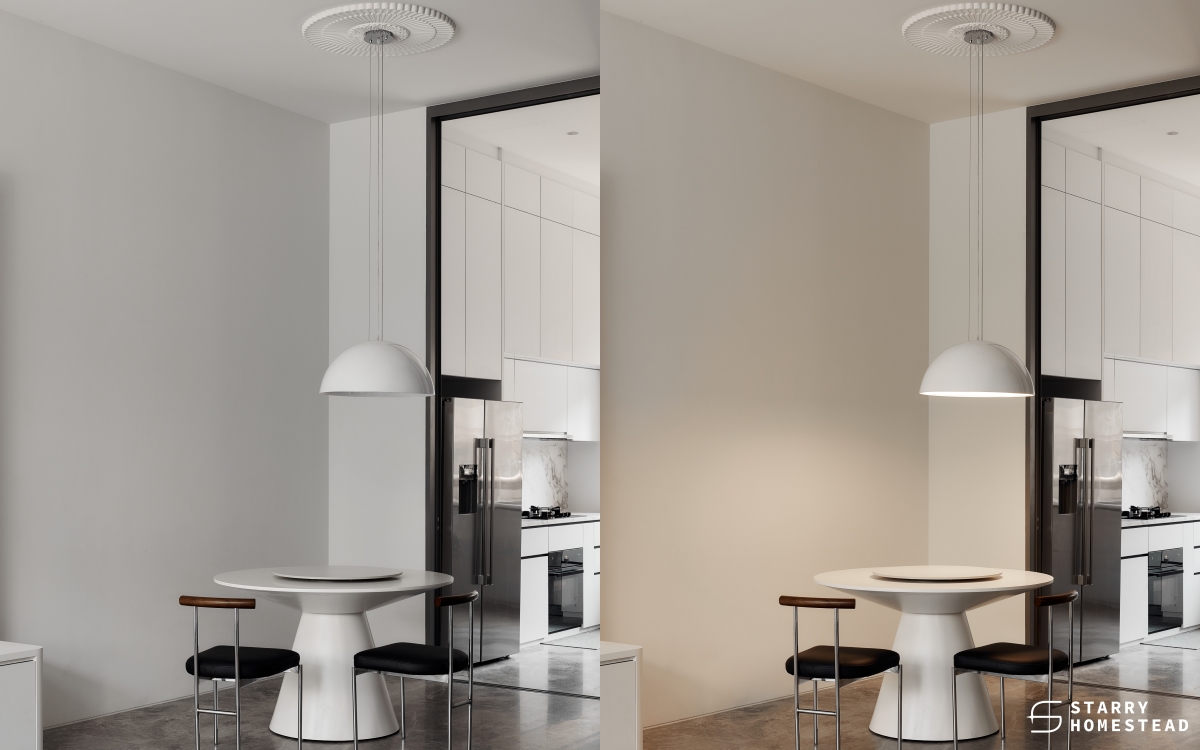 If you’re drawn to the refined elegance of minimalist design or the stark beauty of ultra minimalism, embracing simplicity can transform your living space. Decluttering your surroundings and focusing on the essentials can help you create a living space that promotes calm, focus, and a greater appreciation for the beauty of less.
If you’re drawn to the refined elegance of minimalist design or the stark beauty of ultra minimalism, embracing simplicity can transform your living space. Decluttering your surroundings and focusing on the essentials can help you create a living space that promotes calm, focus, and a greater appreciation for the beauty of less.
Starry Homestead, a leading interior design firm in Singapore, understands the power of minimalist principles in crafting functional and visually stunning spaces. Our experienced home designers can guide you through the process of creating your own minimalist haven tailored to your unique needs and style.
Contact us today for a consultation, and let us help you achieve the serene and elegant space you’ve always dreamed of!
